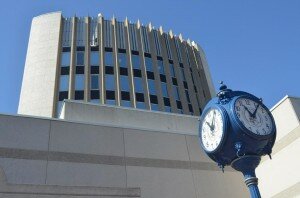Night Club study proposes restrictions on night clubs in condos
Report expected in October
 For the past year and a half, staff have been reviewing the city’s zoning rules for night clubs in response to a staff direction I brought in December 2010. The direction arose out of concerns raised by residents who live in the Baxter, after a restaurant expanded its format into a late-night lounge and began attracting late-night patrons. Despite efforts on behalf of the restaurant and building owner, noise from the sound system and patio from these late night activities continues to disturb the residents. Our current bylaws don’t prevent the conversion of a restaurant to a night club, or restrict night club activities in condos. Standard restaurants are allowed to have dance floors up to a certain size and stay open late, effectively allowing them to switch from a restaurant to a night club in the late night hours.
For the past year and a half, staff have been reviewing the city’s zoning rules for night clubs in response to a staff direction I brought in December 2010. The direction arose out of concerns raised by residents who live in the Baxter, after a restaurant expanded its format into a late-night lounge and began attracting late-night patrons. Despite efforts on behalf of the restaurant and building owner, noise from the sound system and patio from these late night activities continues to disturb the residents. Our current bylaws don’t prevent the conversion of a restaurant to a night club, or restrict night club activities in condos. Standard restaurants are allowed to have dance floors up to a certain size and stay open late, effectively allowing them to switch from a restaurant to a night club in the late night hours.
Staff have prepared a report with initial recommendations to amend the zoning by-law to modify regulations for nightclubs and restaurants in the following ways:
- Prohibit nighclubs from locating in buildings containing residential dwelling units; and
- Require offices, or ancillary uses to residential (such as amenity space) on the second floor of all mixed use buildings that allow restaurants with dance floors at the grade level.
The difference between a “night club” and a “restaurant with a dance floor” is simply the size of the dance floor.
I have asked staff to provide some additional information and recommendations around the feasibility of a distance separator between night clubs, and residential zones. The current separator is 45 metres; I’ve asked for a review of other municipalities with mixed use areas like our downtown. I’ve also asked if we can revise our definition of “night club” in the zoning. Currently, a night club is essentially based on the size of a dance floor, and the incidental service of food.
Standard restaurants can have a dance floor of a certain size; most of the “night club” type of activities that occur in the downtown occur at standard restaurants whose dance floors meet the required size. The distance separator for standard restaurants is 15 metres. Should restaurants with dance floors also have a 45m setback from residential areas?
I am seeking information on whether we can define night club activities and ensure those are not too close to residential areas, and capture the fact that many of our downtown standard restaurants operate much like night clubs from Thursday to Saturday, after about 11pm.
Staff are collecting this additional information. The report will be presented at an upcoming Community Development Committee meeting of council.
Your take: What’s the right approach to balancing the needs of residents for a livable downtown, with the goal of supporting downtown restaurants and bars? Email your thoughts to
My Take: Downtowns are vibrant and noisy; the goal of the staff direction and research is not to outlaw nightclubs, but to ensure that we’ve given thought to locating them in the right area downtown. We want our downtown to be livable; it is not livable if our residents are kept awake several nights a week because they are so close (or literally one floor above) the thumping bass and patio/on street noise from late night revellers leaving bars. It’s a delicate balance, but one we must pursue.




